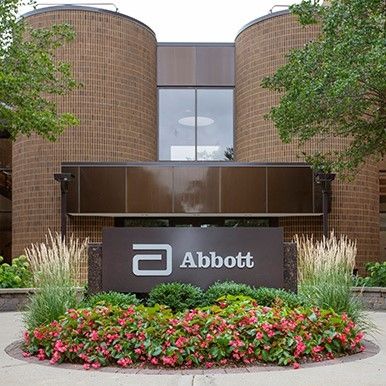Abbott announced the LIFE-BTK clinical trial’s start to evaluate the safety and effectiveness of the company’s new Esprit BTK Everolimus-Eluting Resorbable Scaffold System. This is the first Investigational Device Exemption (IDE) trial in the US to evaluate a fully resorbable device to treat blocked arteries below the knees, or critical limb ischemia (CLI), in people battling advanced stages of peripheral artery disease (PAD). The first patient was enrolled by Danielle Bajakian, a vascular surgeon at New York-Presbyterian, Columbia University Irving Medical Center.
“Far too many people are impacted by peripheral artery disease, and this new drug-eluting resorbable scaffold is needed to offer meaningful improvements in how this disease is treated,” said Nick West, divisional vice president, Medical Affairs, and chief medical officer in Abbott’s vascular business. “Patients treated with balloon angioplasty often require repeat procedures on treated arteries, and therefore a drug-eluting resorbable device is ideally-suited to provide mechanical support for the vessel, reduce the chance of vessel re-narrowing and then gradually disappear over time.”
For people with CLI, blocked vessels impair blood flow to the lower extremities, which can lead to severe pain, wounds, and in some cases, limb amputation. Globally, more than 200 million people suffer from PAD, disproportionally affecting people in underserved communities. Worse, up to 40% of patients with CLI currently undergo amputations, many of which could be prevented by eliminating healthcare disparities.
Currently, the standard of care for patients battling CLI is balloon angioplasty, which relies on a small balloon delivered via a catheter to the blockage to compress it against the arterial wall, opening the vessel and restoring blood flow. However, blockages treated only with balloon angioplasty have low short- and long-term results, and in many instances, the vessels become blocked again, requiring additional treatment.
There are no drug-eluting stents (DES), drug-coated balloons (DCB), or bare-metal stents (BMS) approved for use below the knee (BTK) in the US. With the limited options for BTK, new treatment options are needed. The US Food and Drug Administration (FDA) has granted Esprit BTK breakthrough device designation, streamlines the review and pre-market approval timelines.
Unlike traditional metal stents, Abbott’s Esprit BTK System is not a permanent implant; it supports an artery immediately after balloon angioplasty, preventing it from reclosing. Once implanted, the scaffold delivers a drug over a few months that promotes healing and keeps the artery open. The scaffold is naturally resorbed into the body over time, like dissolving sutures, and ultimately leaves only a healed artery behind. Abbott is a pioneer in bioresorbable scaffolds. Long-term clinical data from a meta-analysis of randomized Absorb trials suggested that bioresorbable scaffolds might be an acceptable alternative to metallic DES for many patients with coronary artery disease.
“After a five-year feasibility study in assessing treatment of arteries below the knee with a different version of this technology, the outcomes suggest resorbable devices have significant potential to become the favored therapy for CLI patients,” said Ramon Varcoe of University New South Wales, Sydney, Australia, and one of the principal investigators in the trial. “This technology offers the best of both worlds. The device provides a strong scaffold structure and delivers antiproliferative drugs, then disappears and is not an impediment for future interventions, surgery or imaging.”
Once fully enrolled, the LIFE-BTK trial will evaluate the Esprit BTK resorbable scaffold in 225 patients at centers worldwide. The study is the first of its kind and evolution of prior studies examining resorbable technology in treating diseased vessels and blocked arteries.









